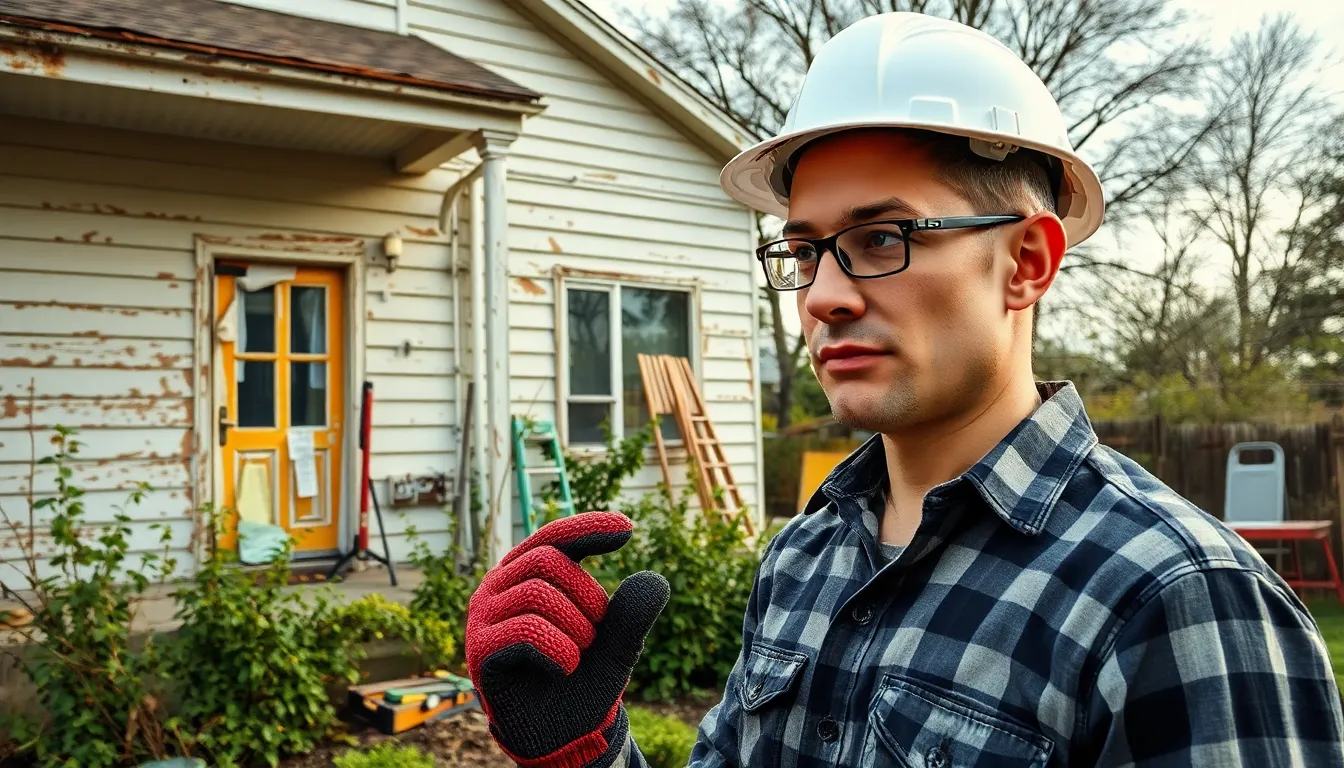House flipping isn’t just a trend; it’s a thrilling rollercoaster ride through the wild world of real estate. Imagine buying a drab old house, giving it a makeover worthy of a reality TV show, and then cashing in big. Sounds like a dream, right? For many, this dream becomes a lucrative reality, but it’s not all sunshine and rainbows.
Table of Contents
ToggleUnderstanding House Flipping
House flipping involves purchasing properties, usually in need of repairs, making improvements, and reselling them for profit. This process can yield significant returns, but it also carries inherent risks and complexities.
What Is House Flipping?
House flipping refers to the practice of acquiring properties, often distressed homes, renovating them, and then selling at a higher price. Investors often seek properties that require cosmetic upgrades or major repairs. A typical house flipper aims to complete renovations quickly, ensuring homes appeal to buyers. Various factors influence success, including location, property condition, and renovation costs. It’s crucial to assess potential profitability before entering a deal.
Benefits of House Flipping
House flipping offers several financial advantages. Investors can achieve substantial profits, sometimes gaining between 20% to 50% more than their initial investment. This venture also allows individuals to learn valuable skills related to real estate, renovation, and project management. Flexible timelines can suit personal schedules, and local market conditions often favor quick sales. Additionally, the excitement of transforming a property presents a rewarding experience for many.
The House Flipping Process

House flipping requires strategic planning and execution at each stage. Investors must navigate key steps carefully to maximize returns.
Finding the Right Property
Finding the right property is crucial for successful house flipping. Investors often search for distressed homes in desirable neighborhoods. Auctions, foreclosures, and online listings provide various opportunities. It’s essential to assess the property’s location, condition, and potential resale value. Properties needing cosmetic updates typically yield higher profit margins. Engaging with local real estate agents can reveal hidden opportunities as well. Targeting areas with rising home values can enhance investment prospects significantly.
Securing Financing
Securing financing represents another vital step in the house flipping process. Many investors opt for hard money loans, offering quick access to capital. Traditional bank loans may involve lengthy approval processes, which can delay renovations. Personal savings often play a part in funding investments, providing more flexibility. Investors should calculate overall costs, including purchase price, renovation expenses, and potential holding costs. Establishing a solid financial plan ensures investors stay within budget. Exploring various financing options can help maximize returns on investment effectively.
Renovation Essentials
Renovation essentials focus on improving the property’s appeal and value. Prioritizing updates that attract buyers, such as kitchen and bathroom renovations, boosts marketability. Efficient use of space often makes a significant difference in perceived value. Investors should select durable materials to minimize future repair costs. Hiring reliable contractors streamlines the renovation process and ensures quality work. Time management becomes crucial during renovations; staying on schedule prevents additional costs. Keeping style consistent throughout the property enhances overall appeal significantly.
Key Considerations for Success
Successful house flipping requires careful planning and informed decision-making. Investors benefit from addressing key factors that influence profitability and efficiency.
Market Research
Conducting thorough market research forms the foundation of a profitable house flipping endeavor. Analyzing neighborhood trends helps identify areas with rising property values. Evaluating recent sales data allows investors to gauge potential resale prices. Understanding the preferences of local buyers can also inform renovation choices. Gathering insights from real estate professionals contributes valuable context to the investment landscape.
Budgeting for Profit
Establishing a comprehensive budget ensures that expenses do not exceed anticipated revenues. Listing all costs, from acquisition and renovation to holding and selling expenses, builds a clear financial picture. Allocating a contingency fund for unexpected issues provides added security. Tracking expenses meticulously throughout the process helps maintain control. Ultimately, staying within budget determines the overall return on investment.
Legal and Tax Implications
Navigating legal and tax considerations is crucial for house flippers. Familiarizing oneself with local zoning laws prevents compliance issues that could hinder progress. Understanding property taxes and capital gains tax implications ensures informed financial planning. Consulting with a real estate attorney provides guidance on contracts, permits, and regulations. Managing these aspects effectively shields investors from potential pitfalls.
Common Mistakes to Avoid
Flipping houses involves various challenges. Recognizing common pitfalls helps investors achieve success.
Over-Improving the Property
Investors often make the mistake of over-improving properties. Adding luxury features may not yield returns aligning with the initial investment. Focusing on moderate upgrades keeps renovation costs in check. Targeting enhancements that appeal to a broad range of buyers maximizes potential resale value. Sticking to the average price points for the neighborhood can maintain balance and profitability.
Underestimating Costs
Underestimating costs poses a significant risk in house flipping. Many investors overlook expenses such as permits, inspections, and unforeseen repairs. Creating a detailed budget should include a contingency fund for unexpected issues. Typically, setting aside 10% to 20% of the renovation budget for surprises can safeguard against financial strain. Accurate cost assessment ensures expenditures align with projected profits.
Ignoring Market Trends
Ignoring market trends can lead to poor decision-making. Investors need to stay informed about local real estate dynamics. Analyzing recently sold homes helps identify popular features among buyers. Assessing seasonal fluctuations also plays a vital role in timing the sale effectively. Emphasizing current market demands enables investors to make educated choices regarding renovations and pricing.
House flipping offers a thrilling opportunity for those ready to dive into the real estate market. With the right preparation and strategic approach investors can turn neglected properties into profitable ventures. It’s crucial to stay informed about market trends and maintain a realistic budget to navigate potential challenges effectively.
The rewards can be significant but require diligence and a keen understanding of both renovations and buyer preferences. By avoiding common pitfalls and focusing on smart improvements investors can enhance their chances of success. Ultimately house flipping can be a fulfilling journey that not only yields financial gain but also enriches one’s skills and knowledge in real estate.



